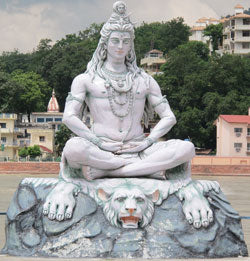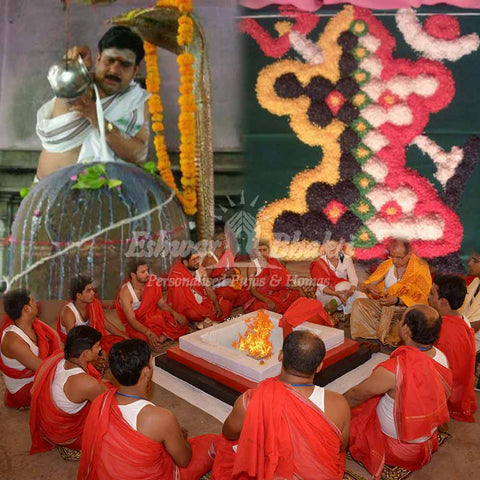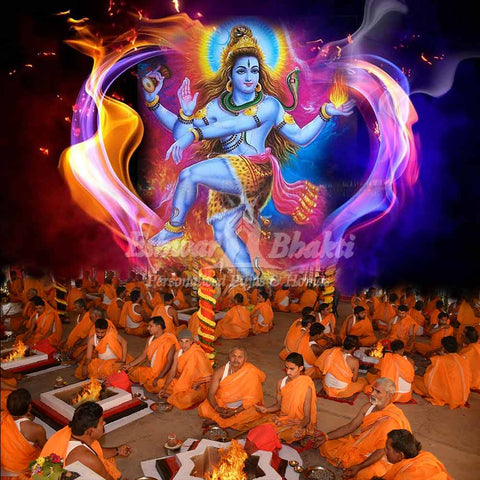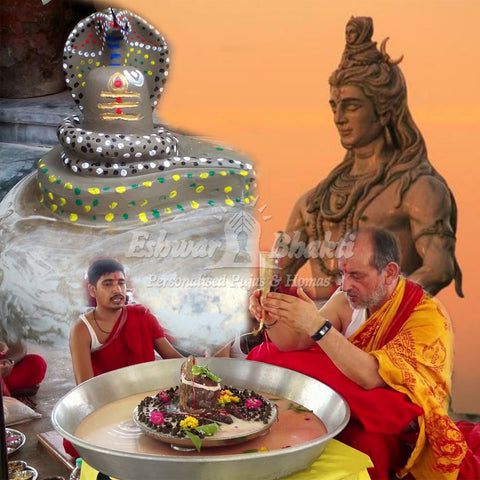Lord Shiva
 Shiva, is one of the three main gods of 'Trimurti' in Hinduism, the world's most ancient religion. Over thousands of years, Shiva has become an icon. No matter whichever part of the country you visit, you will definitely find a temple dedicated to Lord Shiva. From Shankaracharya temple in Kashmir, to Rameswaram in Tamilnadu, from Somnath in Gujarat to Tarkeshwar in west Bengal, Shiva resides in the very heart of India.
Shiva, is one of the three main gods of 'Trimurti' in Hinduism, the world's most ancient religion. Over thousands of years, Shiva has become an icon. No matter whichever part of the country you visit, you will definitely find a temple dedicated to Lord Shiva. From Shankaracharya temple in Kashmir, to Rameswaram in Tamilnadu, from Somnath in Gujarat to Tarkeshwar in west Bengal, Shiva resides in the very heart of India.
Not only India, but temples dedicated to Lord Shiva have been found in countries such as Indonesia, Turkey, Java, Sumatra, and some middle eastern countries also. But, the first question that arises in our mind is, Who is Shiva? Why has he become so important to the people on religious and spiritual paths? What does he symbolize? What can we learn from him? In this article, we are going to explore some of these aspects. So, let's start with the first question.
Who is Shiva?
Shiva is an infinite being. For some he is a god to worship, for some he is the adiyogi, for some, he is the first guru, while for some, he is just a presence. The beauty of Shiva is that you can't fit him into one explanation. Whatever can be explained logically is within the limited dimensions of mind, but Shiva knows no bounds. That's the reason you might find a different interpretation of Shiva wherever you go, sometimes even contradictory.
Shiva is multidimensional. That's why a one-dimensional definition won't fit him. Sometimes he loves, sometimes he meditates. Sometimes he dances in anger sometimes he dances in ecstasy. He is as innocent as one can be, and yet he is the destroyer of evil. He has risen above his morality by drinking the poison to save the world. He has risen above the status of 'dev' to become the 'Mahadev'. Because when one becomes available to Shiva, nothing else is left. All dimensions of life are opened for him.
Shiva has been mentioned in numerous ancient texts and scriptures. There are many stories surrounding him, accompanied by many local folklore as well. One need not bother about the authenticity of these stories. What does it matter if these are even true or not? What matters is the significance of these stories, the significance of the being Shiva himself is.
Existence, the eternal play of Shiva and Shakti:
One cannot imagine Shiva without Shakti. She has become so much in love with him, that she has ultimately become a part of him. That's why Shiva in places has been depicted as Ardhnarishwar, meaning half man and half woman. Now, this doesn't represent the male and female in conversational terms. This essentially means the masculine and feminine nature. If these natures become perfectly balanced in an individual, then he goes beyond both and achieves the ultimate perfection.
Shiva is referred to as Purusha and Shakti as Prakriti. While Purusha means the cause of the source of creation, Prakriti means nature or the creation itself. That's how the creation of life happened. Existence the way it is, is just an eternal play of Shiva and Shakti, the Purusha and Prakriti. It is the goal of spiritual processes to reach the Purusha through Prakriti. That's when a person realizes his ultimate potential and becomes one with the divine.
Different forms of Shiva:
As we have previously discussed, Shiva is multidimensional. He is not one fixed being. That's why, throughout our profound culture, he has been depicted in numerous forms. Each form signifies a different dimension of life. We are going to talk about some of the most popular forms of Shiva.
Mahakal:
Almost every Shiva devotee knows about the Mahakaleshwar temple in Ujjain. Shiva is consecrated here in the form of Mahakal. It is the most ferocious form of Shiva. Shiva represents the 'keeper of time' in the form of Mahakal. He is also depicted as the destroyer of fear and death in this form. Significantly, the Sanskrit word Kaal means both time and death.
If we look closely, time and death are very interrelated. Just because there is time, there is death. If time becomes still, death just disappears. Now, the destroyer of death has to be taken in its essence, not the literal meaning. There is a dimension to life, that was never born, and that is never going to die. When one becomes available to that dimension, he naturally becomes deathless, as he has found something that always remains, irrespective of time and death.
But it takes a great deal of Courage to be in the presence of Mahakal. It is not for the faint-hearted. If one becomes available to Mahakala, he conquers fear, because all fears are in some way, fear related to death. One becomes fearless and now, he can't be shaken within no matter how many adversities he faces. That's what Mahakal represents.
Adiyogi:
Yogis see Shiva as the Adiyogi or the first yogi. It is believed that he is the propounder of Yoga. Now, Yoga doesn't just mean twisting and turning the body into impossible postures, it is a science to become one with the divine. The Yoga word itself means union. Union of the self and existence. Then divinity naturally descends in life.
Yogis also see him as the Adiguru. Because he is the first guru or the one who leads people out of the darkness. Saptarishis or the seven rishis were his first disciples who further spread the science of yoga. Most of the Yoga sects see Shiva as their prime guru. In many representations, Shiva has been depicted as a yogi sitting with eyes closed in absolute stillness, with ecstasy dripping all around him. That's what adiyogi represents.
Ardhnarishwar:
We have already talked about this form of Shiva briefly. Ardhnarishwar represents half man and half woman. This has to be understood in its symbolism. No matter, whether we are male or female, we are always a combination of masculine and feminine energy. This has no relation to the physical body. A male can have feminine energy dominating in him, and a female can have masculine energy dominating him.
Masculine represents power, vigor, stillness. While feminine represents love, innocence, acceptance. In yogic culture also, this has been depicted with Ida and Pingala nadis. Ardhnarishwar means one whose masculine and feminine energy become absolutely balanced, there is no resistance. When those two energies essentially become one, all our inner conflicts end and we become available to a different dimension.
Shiva, the ultimate:
We have tried to understand Shiva in his depths and going beyond the traditions, we have tried to understand the spiritual depths Shiva represents. There's a chant called "Shivoham'' which means I am Shiva. This basically means that whatever Shiva is, we all have the potential to be. This does not mean imitating him, rather achieving the spiritual depths he has experienced.
The significance of Shivalinga:
 Shivalinga is the material symbolization of Shiva. One can find a Shivalinga in almost every Shiva temple. There are many interpretations of a Shivalinga one can find. But essentially, Shivalingas are thought to be powerful consecrated structures that vibrate with spiritual vibrations. One who goes into the presence of these spaces naturally becomes available to divine grace. It is thought that spiritual practices done in those spaces yield higher growth.
Shivalinga is the material symbolization of Shiva. One can find a Shivalinga in almost every Shiva temple. There are many interpretations of a Shivalinga one can find. But essentially, Shivalingas are thought to be powerful consecrated structures that vibrate with spiritual vibrations. One who goes into the presence of these spaces naturally becomes available to divine grace. It is thought that spiritual practices done in those spaces yield higher growth.
Shiva has transcended his limited physical nature and has become an infinite presence. One can get available to the presence if he aligns his energies with the existence itself. However, that's an unimaginable task for the majority of the people. That's why those Shivalingas were consecrated to make those people experience the presence which they can't do themselves. If one is silent within, the presence can be felt in those spaces.
Nothing is lacking, and nothing has to be added, everything is there. It just has to be realized. Going beyond worshipping, we have to listen to Shiva, we have to follow what he says. Only then the seed of spirituality will sprout and the flower of wisdom will bloom in our lives. Shiva is always available, it's time for us to be present, to live Shiva, to experience him, and to be one with him.




